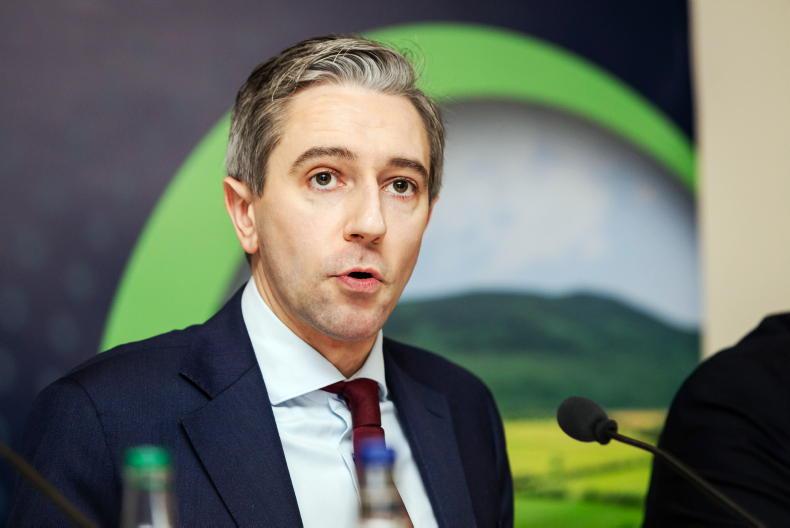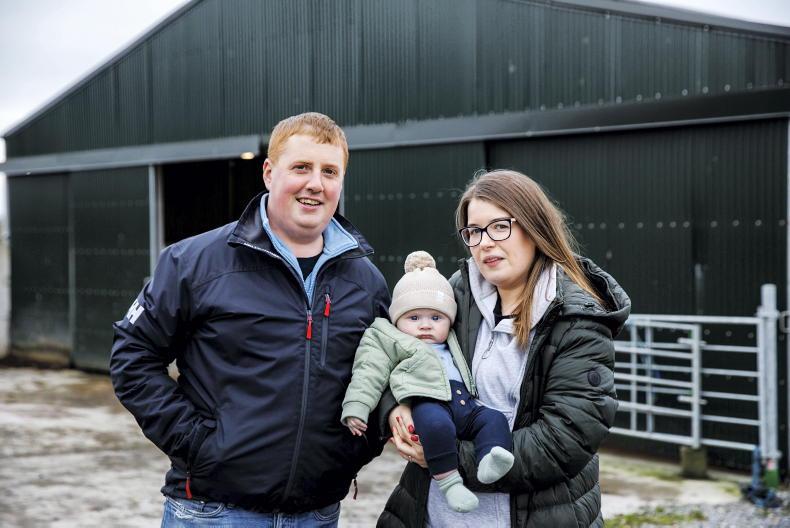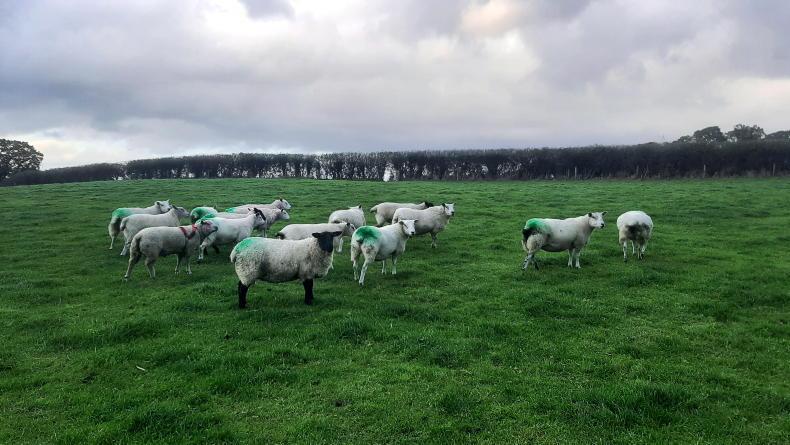Where is the silver bullet to save the sector? There is no silver bullet. That was one of the main messages I took home from BEEF 2024 last week.
The biennial national beef event attracted huge numbers of farmers, and Teagasc deserve a lot of credit for what was a well organised and insightful day.
The fundamentals haven’t changed over the last few decades when it comes to turning things around on a beef farm.
In a move away from the usual four or five main stands, Teagasc just ran two main stands at last week’s event and then focused on the technology villages.
This was based on feedback from previous open days, where farmers hadn’t time to visit all the technology villages they wanted to.
Beef farming is complex, with a vast myriad of systems available to farmers to employ on their farms, so it’s about cutting your cloth to suit your farm and your family life. This year’s format allowed farmers the time to focus on the areas they wanted to.
It is important to hit reproductive targets in the suckler herd, a good calving interval, a high calves per cow per year figure and calving at two years of age will all help drive margins at farm level.
We’ve heard a lot of this before, but according to Teagasc only some of it is sinking in at farm level. High growth in suckler-bred calves was also demonstrated as being critical, coupled with hitting targets for the first and second grazing seasons.
Hitting these targets culminates in a reduced age of finish, and in turn lower GHG emissions per animal for its lifetime.
Paul Crosson, enterprise leader at Grange, highlighted the huge advantage that Irish beef currently has in terms of emissions.
“The average emissions for beef production in western Europe is approximately 18kg CO2 e/kg compared to the global average of approximately 47kg CO2 e/kg carcase.
In an Irish context, average emissions from high performing suckler beef systems range from 15.5-18.8 CO2 e/kg while dairy beef systems range from 10-5-12.4 CO2 e/kg”
It was also highlighted that with the global demand for beef to increase by 10% by 2032 and the consumer focus on sustainable food choices, Irish beef is in a strong position to remain attractive in key export markets.
Huge challenges lie ahead to secure future of beef industry
A number of forums took place during the day on dairy beef and suckler beef while the main one; “Securing your future in beef farming” discussed wider issues in the beef industry.
It was refreshing to hear Pat McDonagh, owner of Supermacs, the fast food chain, talk of his loyalty to Irish beef when purchasing beef for his restaurant and business.
“We are currently purchasing €6.5-€7 million of beef annually for our restaurant chain, with a further €5-€6 million being spent on beef for our hotel and plaza business”
For him it’s all about the quality, traceability and safety of Irish beef that makes the company stick with it. They have been dealing with the same Monaghan company, Rangeland meats, since they started and that trust is important to him. He did highlight a concerning factor around the growth in chicken sales surpassing beef sales in recent years, which he said was a challenge. He also said he couldn’t put his finger on why this was happening.
Marie Donnelly, chair of the Climate Change Advisory Council also did some straight talking on the panel. She said change is happening at farm level but it’s not happening fast enough, and called on the beef industry to incentivise earlier finishing.
She highlighted the three key areas where she sees the biggest wins in climate change taking place; earlier finishing age, making the move from CAN based fertiliser to protected urea-based fertiliser and the introduction of methane inhibiting feed additives.
The Teagasc Marginal Abatement Cost Curve (MACC) was highlighted as central in the industry’s challenge to reduce emissions by 25% by 2030, a huge task. A reduction in livestock numbers wasn’t mentioned. The Government, Teagasc, farm organisations or the beef industry don’t want to grasp this nettle.
The reality is that on the current pathway of adoption of technologies in the MACC, we will miss the 2030 target by a considerable distance, the consequences of which were highlighted by Marie Donnelly on the day as being an €8 billion fine.
Jury out on Mixed Species swards
One trial which attracted a lot of interest on the day was the grass clover and multispecies swards for beef production currently being evaluated at Teagasc, Grange. Herbage and beef production from grass clover and multispecies swards was compared within suckler steer weanling to beef systems, finishing animals at either 19, 23 or 26 months of age.
No chemical fertiliser was applied to the grazing area on each treatment, with cattle slurry and 70-80kg N/ha chemical nitrogen applied to the silage area of the trial.
Animal growth was similar on each treatment, with herbage production and digestibility also being similar for both sward types.
There was also no difference in animal methane production or anthelmintic properties between grass clover swards and multispecies swards. It raises the question about whether we have jumped the gun in relation to multispecies swards.
Dairy beef systems and stocking rate
Another interesting piece of analysis was related to dairy beef systems and stocking rate. The Teagasc research is based around high stocking rates in derogation, with stocking rate being the main driver of profitability on a dairy beef farm. The uncertainty around the derogation is calling into question the ability of a dairy beef system to be profitable at lower stocking rates.
Teagasc say that if stocking rates are required to be less than 170kg/N/Ha, the target of a €500/net margin/Ha will have to be reduced, unless calf purchase price reduces, beef price increases or input costs reduce substantially. Reducing stocking rates from 2.2 L.U/ha to 1.65 L.U/Ha on Dairy Beef 500 farms would wipe €300/Ha off the net margin.
When pushing these systems as alternatives to suckler farmers, we need to be very careful that we are realistic in terms of farm performance and potential profitability. Quoting margins from dairy beef farms stocked at 220kg/N/Ha and growing 15 tonne grass DM/Ha needs to be exercised with caution when comparing beef systems.
Irish beef has a low CO2/ e/kg carcase compared with other countries. (10.5-18.8 CO2 e/kg) There is potential to lower the CO2 e/kg carcase of Irish beef in the future.According to Marie Donnelly, the three areas that should be focused on to hit our 2030 climate change targets are reducing slaughter age, protected urea versus CAN fertiliser use and the use of methane-inhibiting feed additives.There was no difference in weight gain, herbage production, methane production or anthelmintic properties of grass clover swards versus multispecies swards in a beef trial at Teagasc, Grange.The ability for high dairy beef margins will be challenged if the nitrates derogation is removed in 2025.
Where is the silver bullet to save the sector? There is no silver bullet. That was one of the main messages I took home from BEEF 2024 last week.
The biennial national beef event attracted huge numbers of farmers, and Teagasc deserve a lot of credit for what was a well organised and insightful day.
The fundamentals haven’t changed over the last few decades when it comes to turning things around on a beef farm.
In a move away from the usual four or five main stands, Teagasc just ran two main stands at last week’s event and then focused on the technology villages.
This was based on feedback from previous open days, where farmers hadn’t time to visit all the technology villages they wanted to.
Beef farming is complex, with a vast myriad of systems available to farmers to employ on their farms, so it’s about cutting your cloth to suit your farm and your family life. This year’s format allowed farmers the time to focus on the areas they wanted to.
It is important to hit reproductive targets in the suckler herd, a good calving interval, a high calves per cow per year figure and calving at two years of age will all help drive margins at farm level.
We’ve heard a lot of this before, but according to Teagasc only some of it is sinking in at farm level. High growth in suckler-bred calves was also demonstrated as being critical, coupled with hitting targets for the first and second grazing seasons.
Hitting these targets culminates in a reduced age of finish, and in turn lower GHG emissions per animal for its lifetime.
Paul Crosson, enterprise leader at Grange, highlighted the huge advantage that Irish beef currently has in terms of emissions.
“The average emissions for beef production in western Europe is approximately 18kg CO2 e/kg compared to the global average of approximately 47kg CO2 e/kg carcase.
In an Irish context, average emissions from high performing suckler beef systems range from 15.5-18.8 CO2 e/kg while dairy beef systems range from 10-5-12.4 CO2 e/kg”
It was also highlighted that with the global demand for beef to increase by 10% by 2032 and the consumer focus on sustainable food choices, Irish beef is in a strong position to remain attractive in key export markets.
Huge challenges lie ahead to secure future of beef industry
A number of forums took place during the day on dairy beef and suckler beef while the main one; “Securing your future in beef farming” discussed wider issues in the beef industry.
It was refreshing to hear Pat McDonagh, owner of Supermacs, the fast food chain, talk of his loyalty to Irish beef when purchasing beef for his restaurant and business.
“We are currently purchasing €6.5-€7 million of beef annually for our restaurant chain, with a further €5-€6 million being spent on beef for our hotel and plaza business”
For him it’s all about the quality, traceability and safety of Irish beef that makes the company stick with it. They have been dealing with the same Monaghan company, Rangeland meats, since they started and that trust is important to him. He did highlight a concerning factor around the growth in chicken sales surpassing beef sales in recent years, which he said was a challenge. He also said he couldn’t put his finger on why this was happening.
Marie Donnelly, chair of the Climate Change Advisory Council also did some straight talking on the panel. She said change is happening at farm level but it’s not happening fast enough, and called on the beef industry to incentivise earlier finishing.
She highlighted the three key areas where she sees the biggest wins in climate change taking place; earlier finishing age, making the move from CAN based fertiliser to protected urea-based fertiliser and the introduction of methane inhibiting feed additives.
The Teagasc Marginal Abatement Cost Curve (MACC) was highlighted as central in the industry’s challenge to reduce emissions by 25% by 2030, a huge task. A reduction in livestock numbers wasn’t mentioned. The Government, Teagasc, farm organisations or the beef industry don’t want to grasp this nettle.
The reality is that on the current pathway of adoption of technologies in the MACC, we will miss the 2030 target by a considerable distance, the consequences of which were highlighted by Marie Donnelly on the day as being an €8 billion fine.
Jury out on Mixed Species swards
One trial which attracted a lot of interest on the day was the grass clover and multispecies swards for beef production currently being evaluated at Teagasc, Grange. Herbage and beef production from grass clover and multispecies swards was compared within suckler steer weanling to beef systems, finishing animals at either 19, 23 or 26 months of age.
No chemical fertiliser was applied to the grazing area on each treatment, with cattle slurry and 70-80kg N/ha chemical nitrogen applied to the silage area of the trial.
Animal growth was similar on each treatment, with herbage production and digestibility also being similar for both sward types.
There was also no difference in animal methane production or anthelmintic properties between grass clover swards and multispecies swards. It raises the question about whether we have jumped the gun in relation to multispecies swards.
Dairy beef systems and stocking rate
Another interesting piece of analysis was related to dairy beef systems and stocking rate. The Teagasc research is based around high stocking rates in derogation, with stocking rate being the main driver of profitability on a dairy beef farm. The uncertainty around the derogation is calling into question the ability of a dairy beef system to be profitable at lower stocking rates.
Teagasc say that if stocking rates are required to be less than 170kg/N/Ha, the target of a €500/net margin/Ha will have to be reduced, unless calf purchase price reduces, beef price increases or input costs reduce substantially. Reducing stocking rates from 2.2 L.U/ha to 1.65 L.U/Ha on Dairy Beef 500 farms would wipe €300/Ha off the net margin.
When pushing these systems as alternatives to suckler farmers, we need to be very careful that we are realistic in terms of farm performance and potential profitability. Quoting margins from dairy beef farms stocked at 220kg/N/Ha and growing 15 tonne grass DM/Ha needs to be exercised with caution when comparing beef systems.
Irish beef has a low CO2/ e/kg carcase compared with other countries. (10.5-18.8 CO2 e/kg) There is potential to lower the CO2 e/kg carcase of Irish beef in the future.According to Marie Donnelly, the three areas that should be focused on to hit our 2030 climate change targets are reducing slaughter age, protected urea versus CAN fertiliser use and the use of methane-inhibiting feed additives.There was no difference in weight gain, herbage production, methane production or anthelmintic properties of grass clover swards versus multispecies swards in a beef trial at Teagasc, Grange.The ability for high dairy beef margins will be challenged if the nitrates derogation is removed in 2025. 








SHARING OPTIONS